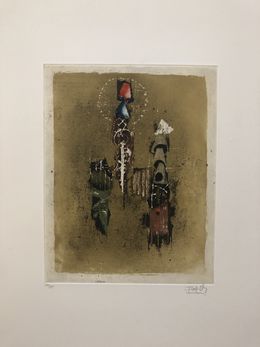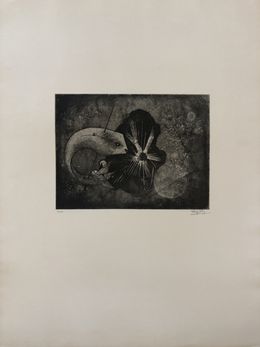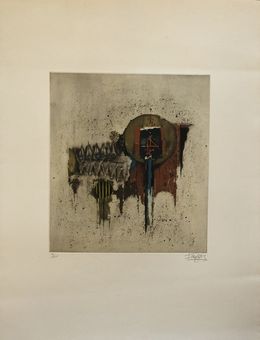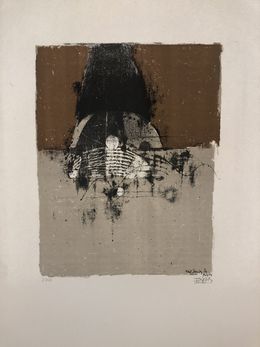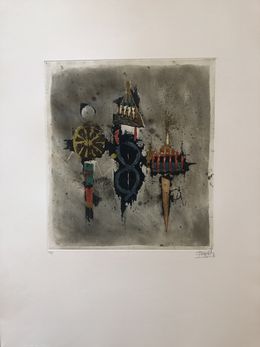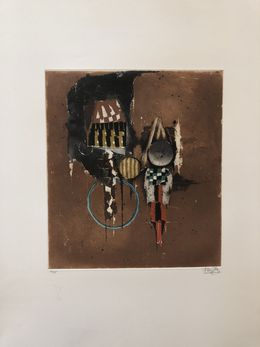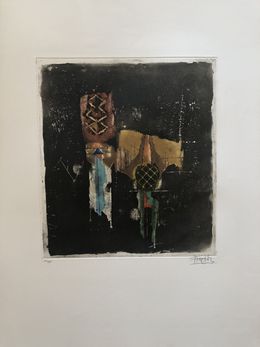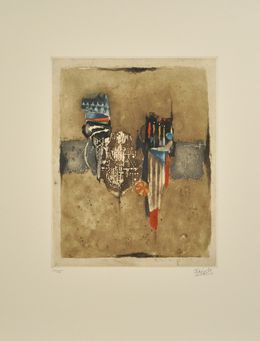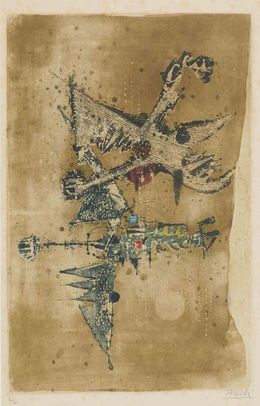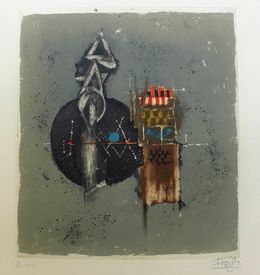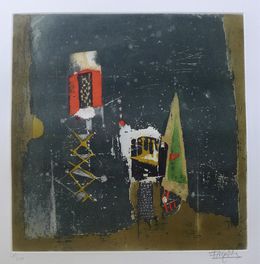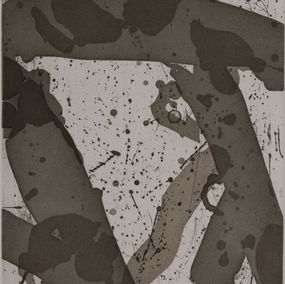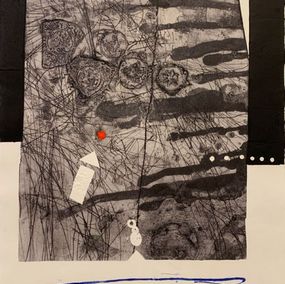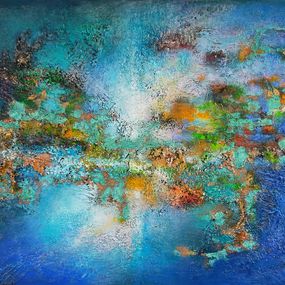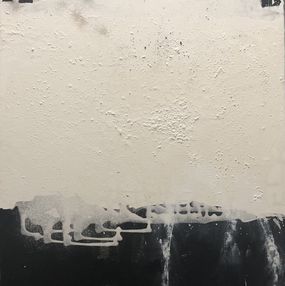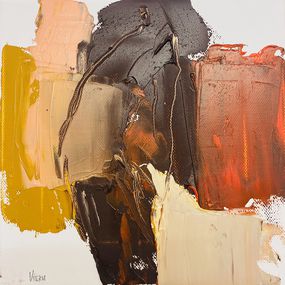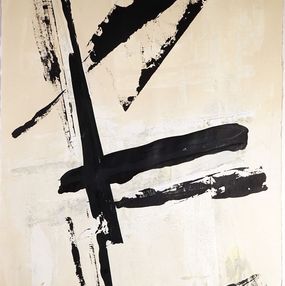
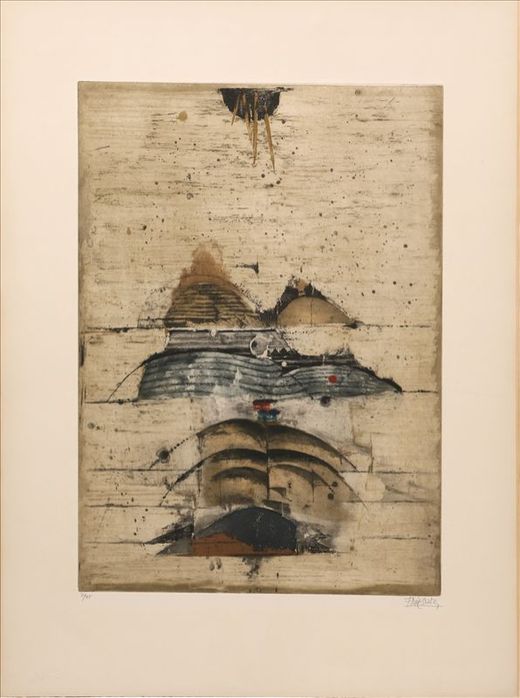
France
• 1912
Biography
Johnny Friedlaender, one of the master of contemporary engraving, was born June 21, 1912 in Pless, Upper Silesia to a Jewish family. After World War I, Upper Silesia was attached to Poland. The Friedlaenders migrated then to Brelsau. Starting in 1928, he studied painting at the Academy of Fine Arts of Breslau where Otto Mueller was one of his teachers and made his first engravings.
From 1930 to 1933, he moved to Dresden, making short visits to Berlin and Paris. In 1933, he was interned in the first Nazi concentration camp. Amnestied, he left Germany in 1935. His fled took him to Czechoslovakia, where he presented his first solo exhibition of engravings, later on he took refuge in Holland. He went to Paris in 1937. André Lhote supported him in the magazine "La nouvelle Revue Française". In 1938, Friedlaender was illustrator of the weekly news magazine Marianne.
He was arrested from 1939 to 1943, as Max Ernst, Hans Bellmer and Ferdinand Springer, he passed by several internment camps and worked with the resistance in southern France. Johnny Friedlaender joined the British Army, he was captured but escaped. The low resistance of the German people to Nazi ideology ,having been forced to flee his country and the fact of having had to engaged to fight it, was a big tear in his life. He tried to get rid of the pain by performing ten engravings, the '' Images of misfortune ''
When peace returned, the artist moved to Paris. In 1949 he founded, with the engraver Albert Flocon, a refugee of German origins as well, an engraving workshop called "Hermitage" which was frequented by artist such as Maria Elena Vieira da Silva, Zao Wou-Ki, Nicolas de Stael. He held his first solo exhibition at the Galerie La Hune, where he exposed his work each following year. This exposition won him an enthusiastic article by Christian Zervos in the magazine Les Cahiers d'art. He became friends with Jacques Villon, a cubist painter and engraver.
The same year he performed etchings for The Season of Love of Paul Eluard. In 1966, he was appointed professor at the Academy of Salzburg. It was during this period that he got back to painting, which he had abandoned since the 40s. Since 1951 he made exhibitions in many museums of Europe, the United States and South America. Naturalized French in 1952, he represented France in 1958 at the Venice Biennale. In 1959, the Unesco proposed Johnny Friedlaender a position to teach engraving techniques in Rio de Janeiro.
He died in Paris, June 18, 1992.
Read more
From 1930 to 1933, he moved to Dresden, making short visits to Berlin and Paris. In 1933, he was interned in the first Nazi concentration camp. Amnestied, he left Germany in 1935. His fled took him to Czechoslovakia, where he presented his first solo exhibition of engravings, later on he took refuge in Holland. He went to Paris in 1937. André Lhote supported him in the magazine "La nouvelle Revue Française". In 1938, Friedlaender was illustrator of the weekly news magazine Marianne.
He was arrested from 1939 to 1943, as Max Ernst, Hans Bellmer and Ferdinand Springer, he passed by several internment camps and worked with the resistance in southern France. Johnny Friedlaender joined the British Army, he was captured but escaped. The low resistance of the German people to Nazi ideology ,having been forced to flee his country and the fact of having had to engaged to fight it, was a big tear in his life. He tried to get rid of the pain by performing ten engravings, the '' Images of misfortune ''
When peace returned, the artist moved to Paris. In 1949 he founded, with the engraver Albert Flocon, a refugee of German origins as well, an engraving workshop called "Hermitage" which was frequented by artist such as Maria Elena Vieira da Silva, Zao Wou-Ki, Nicolas de Stael. He held his first solo exhibition at the Galerie La Hune, where he exposed his work each following year. This exposition won him an enthusiastic article by Christian Zervos in the magazine Les Cahiers d'art. He became friends with Jacques Villon, a cubist painter and engraver.
The same year he performed etchings for The Season of Love of Paul Eluard. In 1966, he was appointed professor at the Academy of Salzburg. It was during this period that he got back to painting, which he had abandoned since the 40s. Since 1951 he made exhibitions in many museums of Europe, the United States and South America. Naturalized French in 1952, he represented France in 1958 at the Venice Biennale. In 1959, the Unesco proposed Johnny Friedlaender a position to teach engraving techniques in Rio de Janeiro.
He died in Paris, June 18, 1992.
Discover the movements linked to Johnny Friedlaender
Discover similar artists
Discover our selections of works by artists
Need help finding your favorite? Consult our selection pages made for you.






